4 Benefits of Proper Roof Installation
Your roof is your home’s first line of defense against wind, rain, hail, and heat. It’s regularly exposed to weather hazards and other harsh elements...
Identifying whether your roof was installed correctly isn't always easy for the average homeowner. We rely on professionals to expertly handle our roofing needs, placing our trust in their skills for a proper installation. However, the sad reality is that not all roofing experts prioritize the meticulous steps required to ensure the longevity of your roof.
In some cases, roofing contractors take shortcuts to expedite the process and maintain lower costs on their invoices. Yet, these seemingly economical choices can lead to substantial expenses for homeowners down the line. Over our three decades of addressing leaky or incorrectly installed roofs, we've encountered instances where not all roofing projects are executed to the same standard.
Improper installations can result in shingles that are compromised, structural damage due to water infiltration, shingles that are loose or missing, and increased vulnerability to storm-related harm. Typically, these issues arise when a roofing contractor lacks the essential experience and skills necessary for a proper installation.
We understand that recognizing signs of improper installation can be challenging. Therefore, in this article, we'll delve into:
Alright, let’s get into it!
Inadequate workmanship stands as a prominent culprit behind improperly installed roofs. When roofers resort to shortcuts in a bid to save time or neglect adhering to the manufacturer's recommended guidelines for installing roofing components, accessories, and materials, the outcome can be a subpar roof that falls short of quality standards.
Here are some telltale signs of shoddy workmanship:
Absence of Starter Shingles: A red flag is raised when the initial course of shingles is directly placed onto the eave or rake without the use of starter shingles. This can create channels where water accumulates along the alignment of the first shingle course, leading to direct contact with the roof deck. Unlike higher courses of shingles, which are safeguarded by layers beneath them, the first course needs a similar protective layer against the elements.
Inconsistent Appearance: Even to the untrained eye, a haphazard appearance indicates poor work. Irregular alignment of materials, noticeable bumps and ripples, and disparities in colors and textures are signs of substandard workmanship. Such visual cues often suggest inadequate training, lack of experience, or an attempt to cut corners.
Drip Edge Absence: The drip edge, a crucial metal flashing, diverts water away from the roof's edge and prevents water from seeping behind the soffit edge and siding. Proper installation dictates that shingles be placed over the drip edge at both the eave and rake edges. The omission of a drip edge can permit water infiltration beneath the shingles, resulting in leaks that may lead to roof deck rot, water stains on siding, soil erosion around the foundation, and even basement flooding.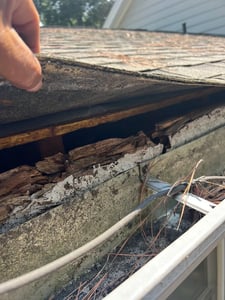
While you might opt for top-tier roofing materials, the quality of your roof is ultimately contingent on the proficiency of the roofing contractor. If the installation is compromised due to poor workmanship, issues are bound to surface sooner rather than later. To gain deeper insights into how working with a subpar contractor could endanger your roof, peruse this article.
Positioned between the indoor and outdoor temperatures, your attic occupies a pivotal role within your home's structure. However, this juxtaposition can trigger condensation and moisture, underscoring the importance of effective attic ventilation.
Neglecting proper attic ventilation can spell trouble, potentially leading to roof failure within just two years. The repercussions of drastic temperature fluctuations can manifest as leaks and other damage, significantly shortening your roof's expected lifespan.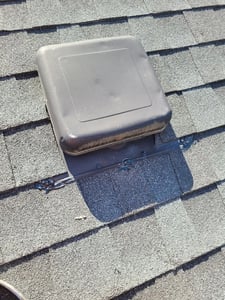
Equally vital is adequate attic insulation, which plays a decisive role in preserving roof health. For instance, residents in colder climates face the risk of ice dam formation when insulation is lacking.
Ice dams take shape due to the recurrent melting and refreezing of snow, a result of heat escaping from your living space. As the snow thaws, water trickles down the eaves until it reaches the unheated sections like the roof's lower edge or soffit area. Upon refreezing, this accumulated water transforms into an ice dam.
The accumulation of water behind an ice dam can inflict harm, leading to shingle deterioration, decking degradation, and water seepage into your attic and exterior walls. A straightforward remedy to this predicament lies in ensuring proper attic insulation.
The significance of both efficient attic ventilation and adequate insulation extends far beyond theory; it directly influences the longevity and resilience of your roof. Remember, a well-ventilated and properly insulated attic can safeguard your roof from potential woes and contribute to the overall longevity of your home.
Improper nailing during asphalt shingle installation stands out as one of the most prevalent errors we encounter. It’s surprising that some contractors struggle to adhere to the specific instructions provided by roofing manufacturers.
The two primary nailing issues we frequently encounter are improper nail placement and overdriven nails.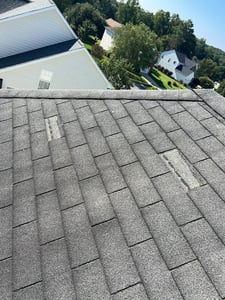
Incorrect placement: Nails positioned above the designated nail line on a shingle constitute what is known as high nails. Detecting high nails can be tricky, as they usually remain concealed beneath the adjacent row of shingles. Despite their hidden nature, high nails can wreak havoc. A shingle with a high nail fails to secure the shingle immediately below it, undermining its integrity.
Overdriven nails: Proper installation requires roofing nails to be driven in straight and with the appropriate pressure to secure the shingles adequately. Failure to meet these criteria can lead to water infiltration beneath the shingles, causing leaks. If you notice shingles appearing raised or lifted, it's possible that the nails were improperly driven.
These nailing defects may seem minor at first glance, but their consequences can be substantial. A compromised nailing job can compromise the effectiveness of your entire roofing system. By ensuring that the nails are correctly positioned and driven during installation, you can substantially enhance the durability and performance of your asphalt shingle roof.
Not so surprisingly, the weather conditions on the day of your roof installation can significantly influence the final outcome. If the temperature drops below 40°F, it’s too cold for roofing work. The adhesive products crucial for installation and replacement require the sun’s warmth to activate properly.
However, if you reside in North Carolina or a region with milder climates, winter roof replacement might be feasible. Although mornings might start as cold as 20°F, temperatures could rise to 45°F or higher by noon.
Rain, however, presents a distinct challenge. The roofing deck beneath the shingles consists of plywood. Exposing this deck to rain after removing the shingles leads to water absorption and swelling. In such damp conditions, shingles won’t adhere effectively to the deck. Placing shingles on a still-damp deck can trap moisture underneath, potentially causing wood rot.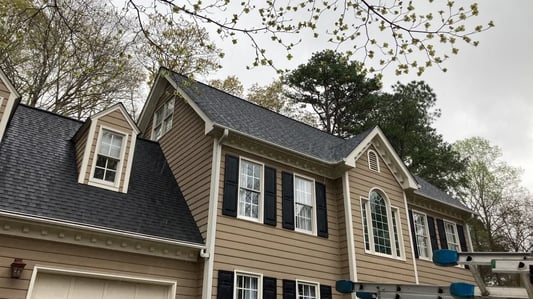
Moist conditions also trigger mold and mildew growth on the roof decking. This growth not only impacts the wood's structural integrity but also diminishes the roof’s overall lifespan. It’s clear that the weather plays a pivotal role in ensuring the success and longevity of your roofing project.
Certain low-quality roofing contractors may opt to reuse old components from your previous roof as a time-saving measure during replacement. However, this practice is far from ideal and can lead to premature roof failure.
It's crucial to understand that each roof is unique, with distinct intersections and corners that demand proper flashing. When it comes to your roof's metal flashing, complete replacement is a necessity during a roof replacement. Reusing old flashing is a short-term solution that will likely result in the need for a new roof within a few years.
Similarly, all box vents and roof boots should be replaced during the roofing process. Box vents play a critical role in removing warm, moisture-laden air from your attic. During replacement, thorough inspection for signs of rot or rust in these components is imperative. Failing to replace worn box vents can have negative repercussions for your roof's health.
If your roofing contractor is neglecting the replacement of flashing and box vents, there's a high likelihood they're also overlooking other essential components:
Ice and Water Shield is a self-adhering, rubberized membrane that acts as a barrier against leaks caused by intense storms, wind-driven rain, and ice dams. By forming a watertight seal between shingles and the roof deck, it effectively prevents water infiltration.
Roofing Underlayment is placed directly on the roof deck. It prevents rain and snow from becoming trapped under shingles, averting potential moisture damage, leaks, mold growth, and rot. Roofing underlayment provides an additional layer of safeguarding beyond shingles alone.
Having discussed the factors contributing to an improperly installed roof, you might be curious about how to ensure your roof is installed correctly. If your aim is a properly installed roof, our recommendation is straightforward: enlist the services of a seasoned roofing contractor.
An experienced contractor, backed by years of hands-on expertise and positive feedback from homeowners in a similar situation as you, will possess comprehensive knowledge of optimal practices for a secure and enduring roof repair or replacement. In this way, you can confidently embark on your roofing project, assured that it's in capable hands.
On Tops Roofing has had over 30 years of roof install experience in the Raleigh, North Carolina area. Whatever your roof requires, We’re on it!
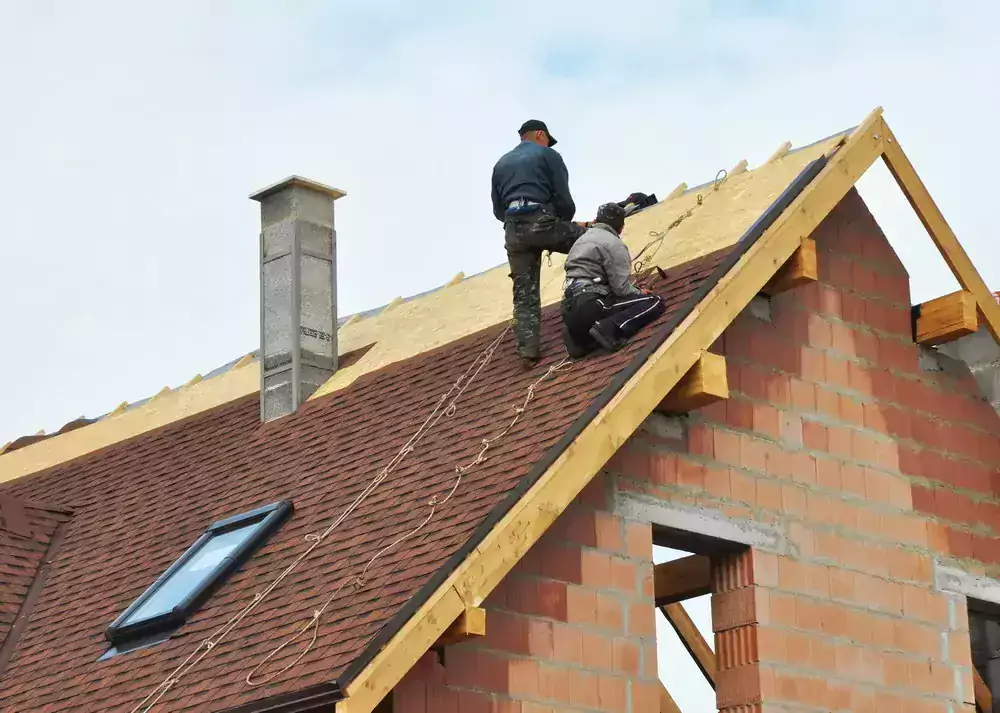
Your roof is your home’s first line of defense against wind, rain, hail, and heat. It’s regularly exposed to weather hazards and other harsh elements...

The first crucial step in a successful roof replacement is finding the right roofing contractor. With numerous roofing companies in the area, it can...

Shopping around for roof replacement estimates can seem overwhelming. What should it include? What shouldn't be in it? Will it cover everything...